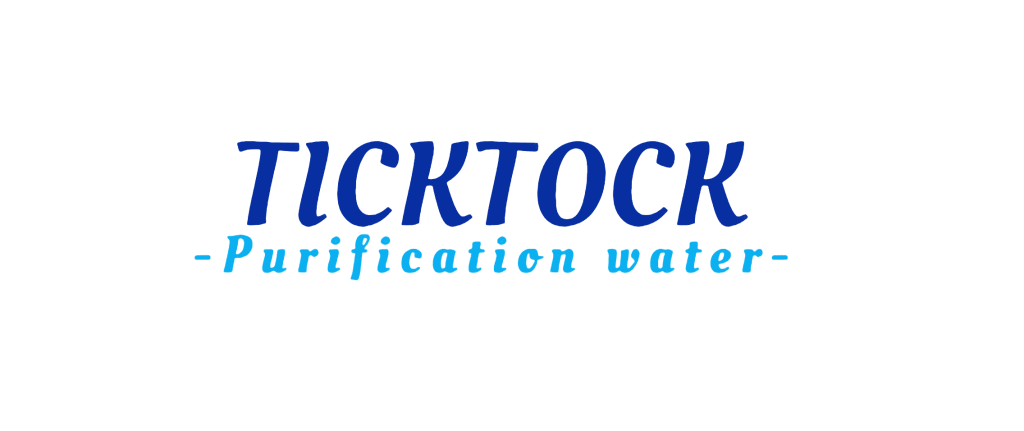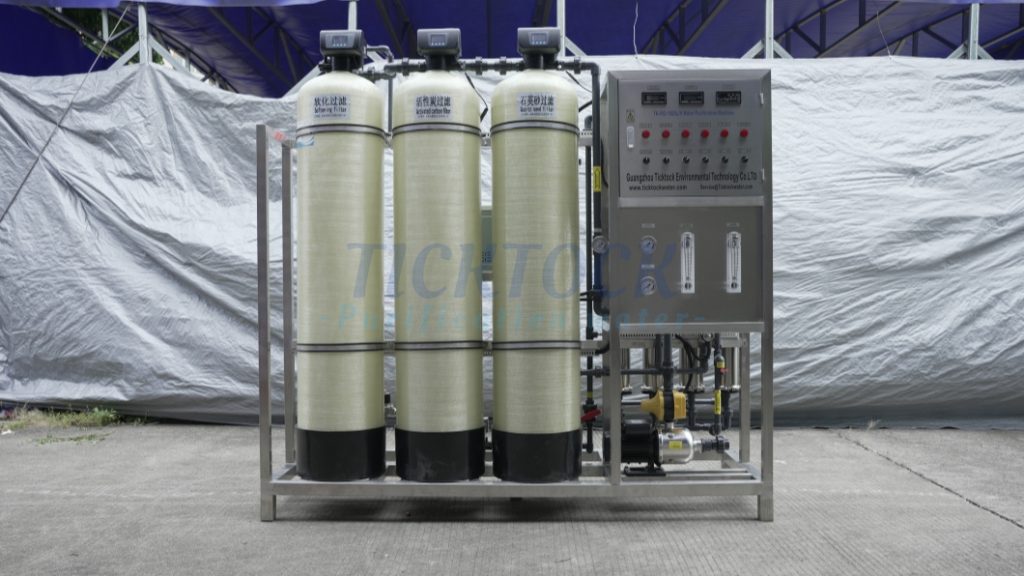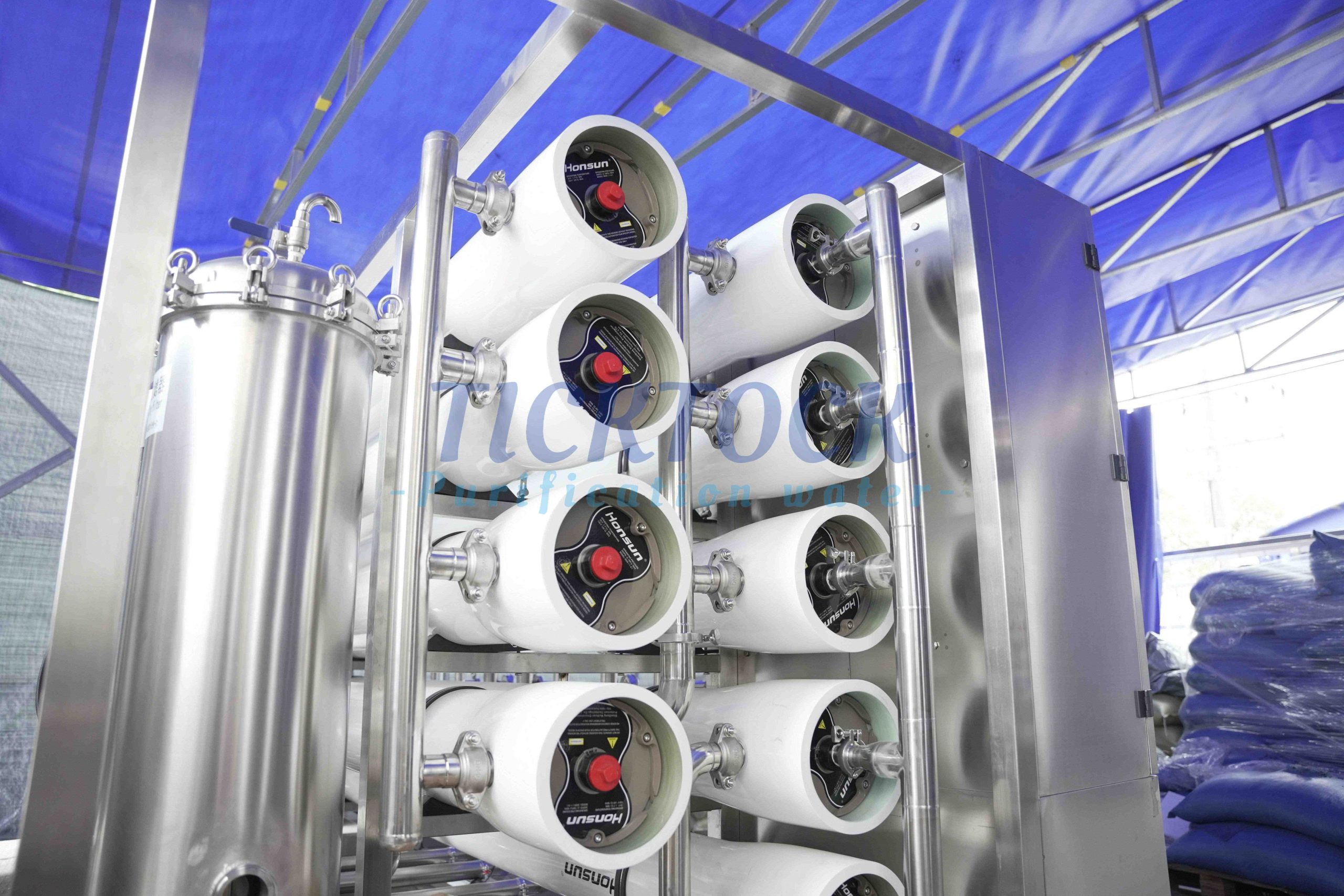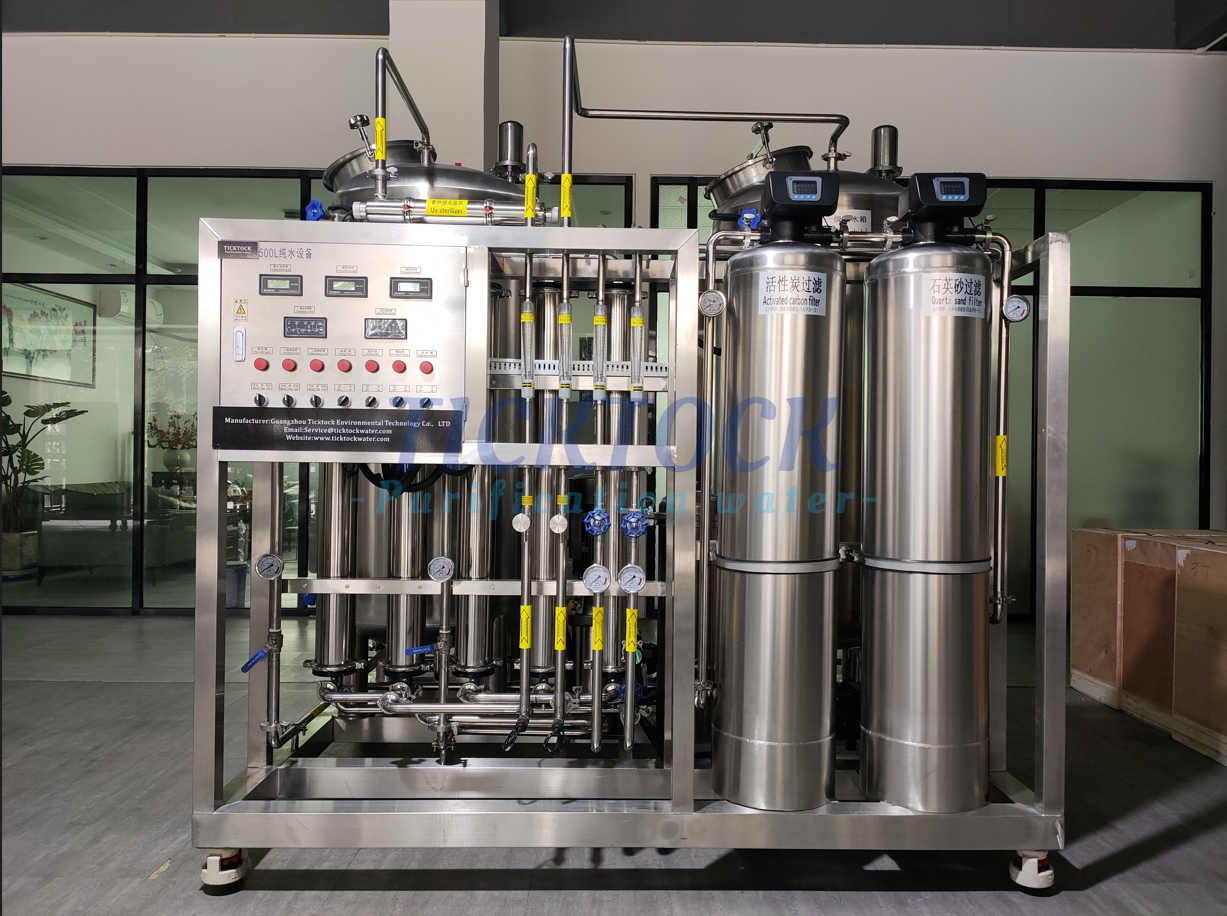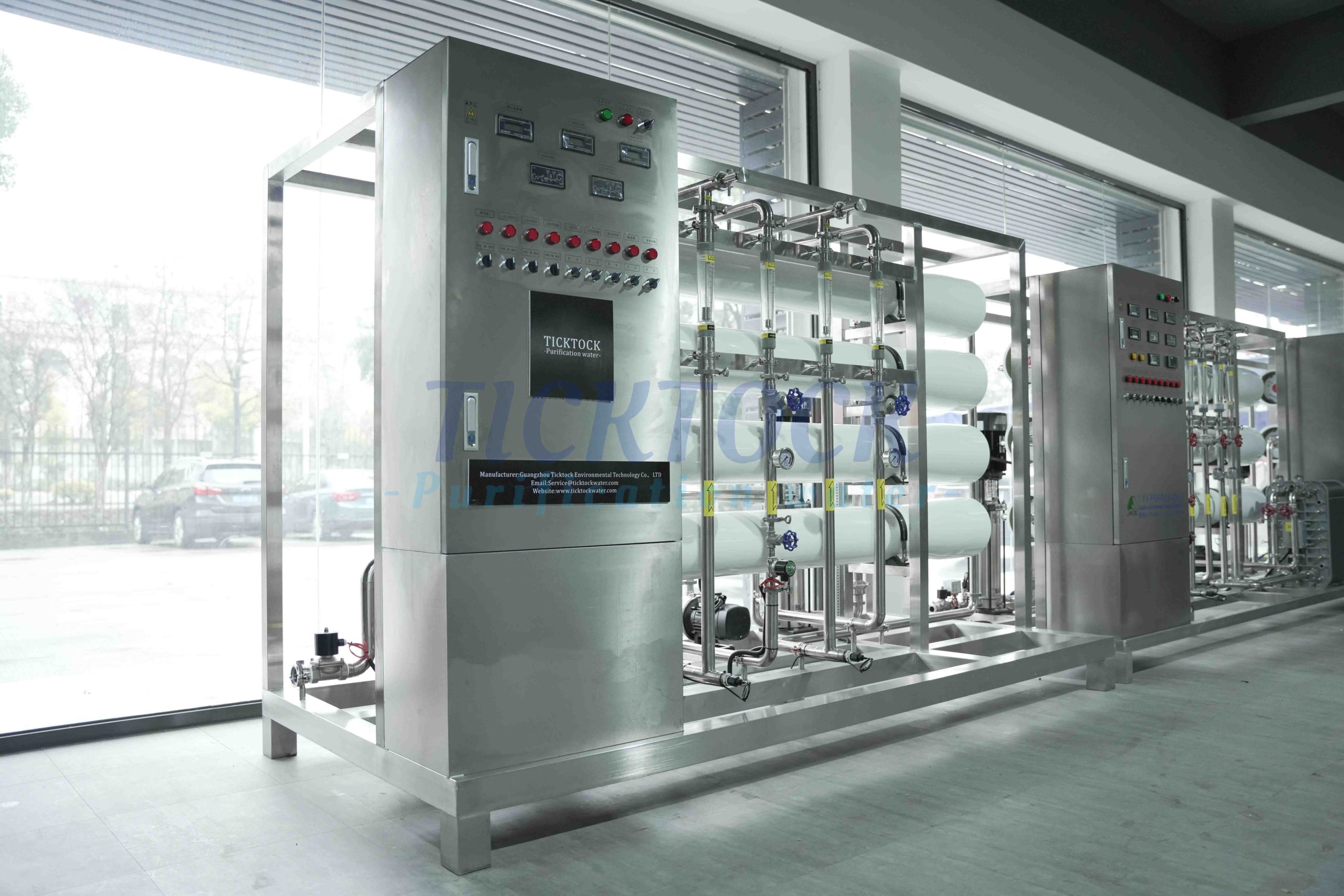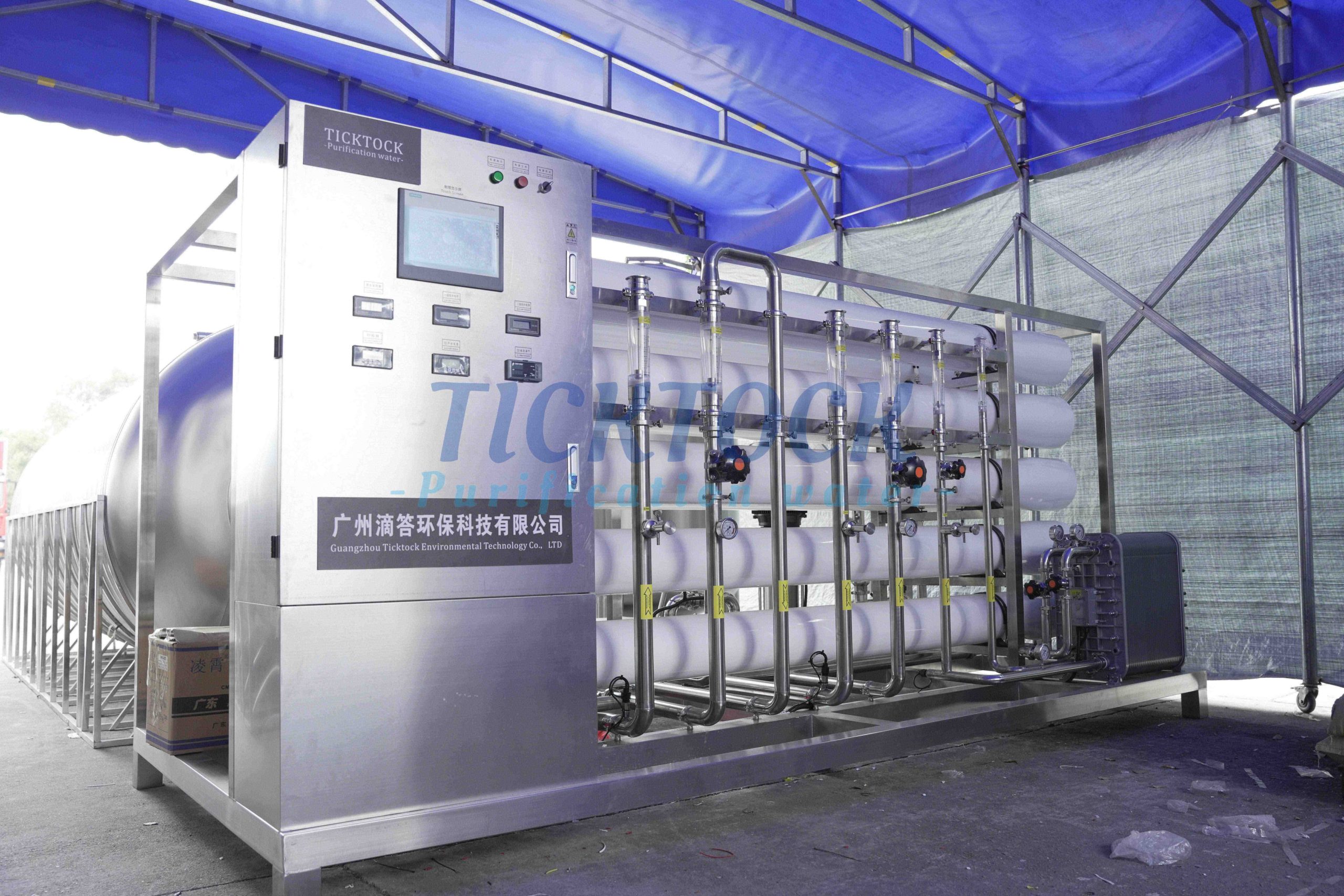Reverse osmosis (RO) equipment separates water from impurities through pressure-driven semipermeable membranes. The core principle involves applying high pressure (2-8 MPa) to raw water, forcing water molecules through a membrane with a pore size of 0.0001 microns, while dissolved salts (e.g., heavy metal ions), organic matter, bacteria, and viruses are rejected due to size or charge differencesKey steps include:
Osmotic Pressure Overcome: When applied pressure exceeds the solution’s osmotic pressure, water flows against the natural osmotic direction, producing purified water (permeate), while concentrated impurities (brine) are discharged.
Selective Separation: Polyamide or chelating resin membranes block >99% of dissolved solids, 99.9% of bacteria/viruses, and reduce COD to <10 mg/L.
Industrial Enhancement: Combined with pretreatment (e.g., activated carbon) and post-treatment (e.g., EDI), water quality can reach ultrapure standards (18 MΩ·cm resistivity).
RO equipment consists of the following core systems:
Pretreatment System
Function: Reduce raw water SDI and chlorine to protect RO membranes.
Components: Raw water pump, quartz sand filter (suspended solids removal), activated carbon filter (organic/chlorine adsorption), 5μm cartridge filter.
RO Unit
High-Pressure Pump: Provides 2-8 MPa driving force.
RO Membrane Modules: Spiral-wound elements with 0.0001μm pores and >98% salt rejection
Pressure Vessels: Secure membranes and withstand high pressure.
Post-Treatment System (Optional)
Ion Exchange: Mixed-bed or EDI for further desalination.
EDI Modules: Produce ultrapure water without chemical regeneration.
Cleaning System
Components: Cleaning tank, recirculation pump, and cartridge filter for periodic membrane maintenance.
Control System
Sensors & Automation: Monitor pressure, conductivity, and flow rate for automatic operation and alerts.
Published by: TICKTOCK, Inc

